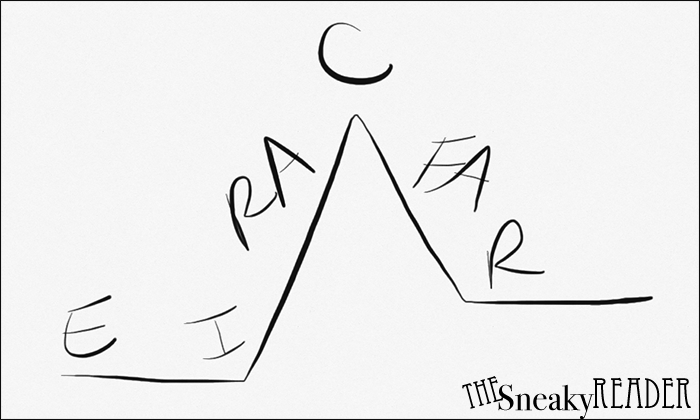Preparing for Centers
Before trying to run centers, I think it's important to do some preparation:- Build comfort and confidence with the activities you want to use in your centers through teacher modeling, whole class guided practice, and pair-share.
- Find a way to arrange your classroom so that each center lends itself to collaboration and independence (grouped desks in triangles or circles makes sense to me). The stations should be far enough away to avoid distraction but close enough that you can monitor what's happening in the other groups.
- Make the activities in the beginning stages very transparent and require accountability-- instead of just practicing with a vocabulary game, for example, find a partner vocabulary activity that requires a written transcript (such as a "round robin" vocabulary story where students pass off a piece of paper and each write a new sentence with one vocabulary word in it).
- Find a way to show students the time so they know exactly what they need to accomplish. It could be as simple as writing the time for each round on the board (and putting a student in charge of ringing a bell or announcing the rotation), or as high-tech as projecting a timer onto the white board (if you type "timer" into Google, it will pop up automatically).
Sample Centers for Fahrenheit 451
For my first shot at centers, I had the students working on three things: |
| Free vocabulary story template |
- Vocabulary station - Students write a partner (or small group) vocabulary story, one sentence at a time, passing the same paper around to continue the narrative.
- Click on the worksheet to the right to download my free template!
- Close reading station - Students take turns reading a paragraph or two of the next section of Fahrenheit 451, pausing to answer close reading questions together.
- Discussion group station - Students meet with the teacher in a small group to discuss higher-order analysis questions related to yesterday's reading, using the texts as evidence.
With a little bit of planning, centers can help you to give your students the individual attention they need while helping you incorporate a variety of skills into one lesson. Getting your students up and moving is a great way to keep them focused and engaged throughout the period.
Do you think you'll ever try centers in your high school classroom? What are some of your concerns going into it? Drop a line in the comments!




